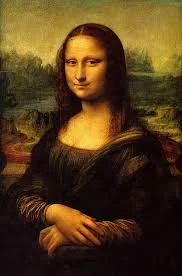“Education...is painful, continual and difficult work to be done in kindness, by watching, by warning,... by praise, but above all -- by example.” -- John Ruskin
I am an artist; I am an educator. Neither identity overshadows the other; they are inseparable and enrich one another. As a teacher, I strive for my students to synthesize and translate knowledge. Knowledge brings about understanding. Understanding enhances the pursuit of knowledge. Though active engagement in their visual culture, I push my students to become creators of the world around them instead of passive viewers. I have actively refined this philosophy through out my professional career and as I continue working towards receiving another Bachelor’s Degree in Fine Art. The diversity in my educational and professional background provides the skills necessary to create a rigorous yet nurturing environment, which enables art students to grow to their maximum ability.
No matter what the discipline, my classroom has always been a place of practice, discussion, lecture, and development. I approach art-making with the same interdisciplinary style as I do my teaching. Although my work is primarily mixed-media and 3-dimensional in nature, I explore and practice concepts of drawing and painting through unfamiliar lenses. Knowledge is inherently interdisciplinary; ways of seeing, skills, and methods build upon each other and are applicable across media and subject.
As an artist educator, my goal is to foster an environment where my students can gain the necessary skills to become knowledgeable and creative thinking artists. The balance of hands-on discovery learning, student-oriented curriculum and group discussion that emphasizes social and personal awareness are the fundamentals of my curriculum. Under my instruction, students are able to take in information, process it, and manipulate it through their own lens. My courses are student-centered with an emphasis in developing conceptual and well-crafted work. My student-focused approach, to fine art, is a form in which to explore interests, issues, and themes that relate to them and their world. My foundation classroom experience is about exploration of materials, subject, and tools. My foundation curriculum encourages students to investigate how a variety media can speak differently to a concept and which medium is best to communicate their ideas. The goal of teaching communication through art is achieved with structured skill-building.
The beginning art classrooms begin with extensive academic vocabulary, skill-building and exposure to the diversity of drawing and painting within art history and contemporary art. As the course level progresses to intermediate, so does the student’s independence of subject and construction. In the advanced course, my role as instructor shifts from expert and lecturer to facilitator and resource. Through each level, critique is a strong core to my student’s learning process. It is a time when students must learn to translate their artwork from a visual language into a written and auditory explanation. Critique also allows for reflective and reflexive growth.
Through the exploration of concepts, they will gain a firm technical understanding of the elements of art and principles of design, in order to aid their creativity in presenting their message. These art concepts can only become a medium of communication if one has a strong understanding of the material. This understanding is gained through practice, struggle, experimentation, and joy.



